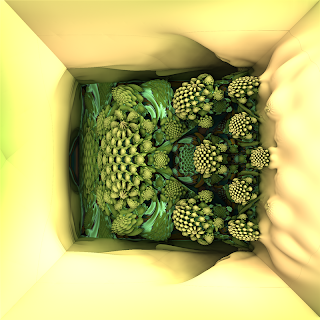So! The Formula Adjuster... Jesse actually implemented this amazingly useful little feature ages ago. If you don't already know about it, believe me, you're going to love it.
You know how annoying it can be sometimes, when, after looking for a good combination of formulae and finally finding something that looks like it might work; that might produce your next beautiful fractal art piece, you set your eyes on those formula parameters and your heart sinks... Because now, you have to make small adjustments going back and forth between formula tab and render, trying to find something that looks interesting/unique.
Well, for those who understand the in-depth workings of the formulae/parameters and how they might affect a fractal, this process might be a bit easier because of course they have some idea of what to expect when they adjust such-and-such a parameter, or add such-and-such a formula after having done this or that...
But as for the rest of us... It's all guess-work, really. Especially in the beginning. And thus, Jesse thought of us! Hehe... Presenting, the parameter adjuster bar!
 | |
| The Parameter Adjuster Bar |
To find it, you need to open the Navigator, and click on the little arrow in the bottom right corner (yes, that inconspicuously framed red one ;P).
So, for the purposes of this tutorial page, I chose everybody's favourite, AmazingBox, as Formula 1. And I tried a few before settling on ABoxVeryScale for Formula 2. What you see in the above image is one corner of the AmazingBox without any adjustments. As you can see up there on the right, where I've underlined in red, you can choose which formula to work with. F. nr. is "Formula number" and I've got it on Formula 2, ABoxVaryScale.
You'll notice also, the "min", "fine", "mid" and "big" options right at the top. These are extremely useful, because they determine just how much a parameter will change when you slide the scales left or right. This is good because most of the time, changes in very small numbers can have big effects on your fractal.
And because you're already in the Navigator, you will see the adjustments affecting the fractals right there and then! =) Let me demonstrate.
With the "min" option, the changes were too imperceptible, so I started with "fine" on the Fold parameter:
 |
| Fine Adjustment |
Notice how the parameter value only increases by 0.09375, but the image has changed noticeably. You'll see that when you let go of the mouse button after dragging, the scale bar snaps back to the center. Then you can adjust further, like so:
 |
| Fine Adjustment 02 |
I dragged it to the right three times. You see how you can perceive the changes to the fractal as you drag the bar? I love this. I never really used this feature properly before, and I can't wait to get started.
Other important bits to notice: That "Reset value" button. It does what it says: It resets the parameter value that you last adjusted back to the value found in Mandelbulb3D's main program Formula tab. On the other hand, if you click the "Send value" button, it takes whatever the current parameter value is and sends it to the Formula tab, so that then, the "Reset value" button will return the value to the one you sent to the main program, not the "default" formula value.
The other wonderful thing here is the "Julia values (x,y,z)" tab at the top. Open that up and you can preview the current formulae as they would appear in Julia mode, as well as adjust the x, y, and z values to find something interesting, all before rendering anything! And of course, once you find your "spot", as normal, you click on the "View to main" button there at the bottom left and "Calculate 3D" in the main program.
To demonstrate further, here are a few more images, with explanatory captions (I will reset the value every time before making another change):
 |
| Fine Adjustment to the "Min R" parameter to 0.125 |
 |
| Mid adjustment to the "Scale" parameter to 0.975 |
 | |
| Mid adjustment to the "Scale vary" parameter to -0.6 |
 |
| Mid adjustment to the "R power" parameter to 0.525 |
 |
| Many changes to various parameters! =) And zoomed in a bit. |
You must also remember that I manipulated the very outer corner of the entire Amazing Box. If you start zooming in and discovering landscapes within it, then even "min" adjustments will result in big changes. At that scale, the tiniest of numbers matter a lot.
How great is this? I really can't wait to get stuck in and make some art. The possibilities are a bit overwhelming, really... How many times have I just gotten lost within a fractal for hours without "producing" anything....? And that was before this feature!
Okay, that's it for this post. This new version of Mandelbulb 3D has many new tabs and buttons that I don't recognise, so I'll be playing around and will make tutuorials as I learn =) Also, I'm planning on finally learning how to make videos, for which I'll make a separate tutorial. Really looking forward to it all!
To finish this off, here's a high-resolution image of my last adjustment example above, for your viewing pleasure =) ... (Click on it for full size):
 |
| Corner of the AmazingBox HD with ABoxVaryScale adjustments and colour changes. |
If my tutorial is helping you, please consider supporting me over at my Patreon page.
I also have a deviantArt gallery.
I also have a deviantArt gallery.























